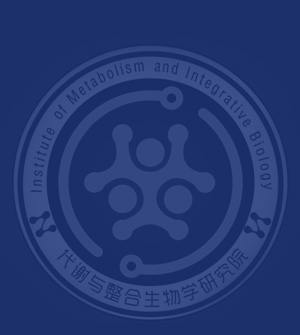

青年研究员
邮箱:renruobing@fudan.edu.cn
办公地址:上海市杨浦区湾谷科技园2期D3座1306室
个人简介
任若冰博士2009年获得中国科学技术大学生命学院生物技术学士学位,2015年获得清华大学生物学博士学位,2015-2017年于Amgen亚洲研发中心任结构生物学副研究员,2018-2021年于香港中文大学(深圳)生命健康科学学院及科比尔卡创新药物研究院担任“准聘-长聘制”助理教授及博士生导师,2021年底加入复旦大学代谢与整合生物学研究院任青年研究员。
主要研究方向
任若冰博士一直从事与重大疾病相关的膜蛋白分子机制研究,通过以X射线晶体学和低温冷冻电子显微镜技术为主的结构生物学研究手段,结合其他生物物理和生物化学分析方法,主要聚焦方向包括:
(1)类固醇激素代谢及其失调引发的内分泌系统疾病的药物开发;
(2)脂肪和脂肪酸代谢及其引发的代谢性疾病的药物开发;
(3)鞘脂分子的代谢及其引发的免疫系统疾病的药物开发;
(4)基于人工智能开发脂质代谢疾病治疗新思路和新方法。
荣誉及获奖情况
2018年 深圳市高层次人才A类
2018年 深圳市龙岗区深龙英才A类
2018年 深圳市龙岗区优秀专家
2020年 香港中文大学(深圳)校长青年学者
代表性成果
Ti R*, Pang B*, Yu L, Gan B, Ma W, Warshel A#, Ren R#, Zhu L#. Fine-tuning activation specificity of G-protein-coupled receptors via automated path searching. Proc. Natl. Acad. Sci. U.S.A. 121 (8), e2317893121.
Jiao H*, Pang B*, Liu A, Chen Q, Pan Q, Wang X, Xu Y, Chiang Y#, Ren R#, Hu H#. Structural insights into the activation and inhibition of CXC chemokine receptor 3. (2024) Nature Structural & Molecular Biology. e-print, 1-11.
Pang B*, Yu L*, Li T*, Jiao H, Wu X, Wang J, He R, Zhang Y, Wang J, Hu H, Dai W#, Chen L#, Ren R#. Molecular basis of Spns2-facilitated sphingosine-1-phosphate transport. (2023) Cell Research. 34:173-176
Jiao H*, Pang B*, Chiang Y, Chen Q, Pan Q, Ren R#, Hu H#. Structure basis for the modulation of CXC chemokine receptor 3 by antagonist AMG487. (2023) Cell Discovery. 9 (1), 119
Wu X, Pang B, You J, Yu L, Ren R#, Wang H#, Chen L#. An LC-MS-based workflow measures the export activity of S1P transporters. (2023) Biochemical and Biophysical Research Communications. 668, 118-124.
Yu T, Huang T, Yu L, Nantasenamat C, Anuwongcharoen N, Piacham T, Ren R#, Chiang Y#. Exploring the Chemical Space of CYP17A1 Inhibitors Using Chem-informatics and Machine Learning. (2023) Molecules. 28(4),1679.
Han Y, Zhuang Q, Ren R#. Approaches for evolutionary, biochemical, and structural analysis of bacterial steroid 5a-reductases. (2023) Methods in Enzymology. e-print
Gan B*, Yu L*, Yang H*, Jiao H, Pang B, Chen Y, Wang C, Lv R, Hu H, Cao Z#, Ren R#. The structural basis of itch receptor MRGPRX1 activation. (2023) PLOSBiology. 21(6), e3001975.
Wang C*, Yu L*, Zhang J*, Zhou Y*, Sun B, Xiao Q, Zhang M, Liu H, Li J, Luo Y, Xu J, Lian Z, Lin J, Wang X, Zhang P, Guo L#, Ren R#, Deng D#. Structural basis of the substrate recognition and inhibition mechanism of Plasmodium falciparum nucleoside transporter PfENT1. (2023) Nature Communications. 14 (1), 1727.
Zheng L*, Meng J*, Lin M, Lv R, Cheng H, Zou L, Sun J, Li L, Ren R#, Wang S#. Structure prediction of the entire proteome of monkeypox variants. (2022) Acta Materia Medica. (Cover article), 1(2), 260-264.
Yu L*, He L*, Gan B*, Ti R*, Xiao Q, Hu H, Zhu L#, Wang S#, Ren R#. Structural insights into sphingosine-1-phosphate receptor activation. (2022) Proc. Natl. Acad. Sci. U.S.A. 119 (16), e2117716119.
Han YF*, Zhuang Q*, Sun B*, Lv WP*, Wang S*, Xiao QJ, Pang B, Zhou YL, Wang FX, Chi PL, Wang QS, Li Z, Zhu LZ, Li FP, Deng D#, Chiang Y-C#, Li ZF#, Ren RB#. Crystal structure of steroid reductase SRD5A reveals conserved steroid reduction mechanism. (2021) Nature Communications. 12 (1), 449.
Ren RB*,#, Pang B, Han YF, Li YH. A Glimpse of Structural Biology on Sphingosine-1-Phosphate Metabolism. (2021) Contact. 4, 2515256421995601.
Chen G*, Wang XK*, Ge YJ*, Ma L*, Chen Q, Liu HH, Du Y, Ye R, Hu HL#, Ren RB#. Cryo-EM structure of activated bile acids receptor TGR5 in complex with stimulatory G protein. (2020) Signal transduction and targeted therapy. 5 (1), 142.
Ren RB*, Zhou XH*, He Y, Ke M, Wu JP, Liu XH, Yan CY, Wu YX, Gong X, Lei XG, Yan SF, Radhakrishnan A, Yan N#. Crystal structure of a mycobacterial Insig homolog provides insight into how these sensors monitor sterol levels. (2015) Science. 349 (6244), 187-191.
Xie T*, Ren RB*, Zhang YY*, Pang Y, Yan C, Gong X, He Y, Li W, Miao D, Hao Q, Deng H, Wang Z, Wu JW#, Yan N#. Molecular mechanism for inhibition of a critical component in the Arabidopsis thaliana abscisic acid signal transduction pathways, SnRK2.6, by protein phosphatase ABI1. (2012) Journal of Biological Chemistry. 287 (1), 794-802.




 复旦大学网上办事服务大厅
复旦大学网上办事服务大厅 复旦大学实验室安全教育与管理平台
复旦大学实验室安全教育与管理平台